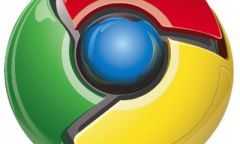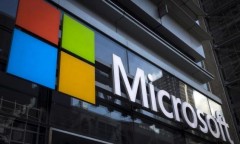By Steve Pak, | March 09, 2016

Web Browser Logos
MIT researchers have developed a new method of loading web pages 34 percent faster in any Internet browser. This new tech collects files more efficiently. It could be used in conjunction with faster Internet connections to reduce the wait times for complex pages to load.
The new system named Polaris was developed by the New England university's Computer Science and Artificial Intelligence Laboratory, according to Gizmodo.
Like Us on Facebook
Ravi Netravali was one of the MIT researchers who helped to develop the new tech. He shared in a press release that web browsers often make multiple trips, which result in more delays.
Netravali explained that the tech researchers reduced the number of "round trips" in order to make a web page's load time much faster.
When Internet users click on a link or hit enter after a URL the brower starts collecting many types of objects. These include HTML files and pictures.
Microsoft Edge, Mozilla Firefox, Apple's Safari and other browsers check each object then add it to the web page a person is viewing. The process starts by gathering the first object.
Browsers must also grab objects from other independent sources. However, they do not know which ones to collect until they have collected the first object, which causes more round-trips across the net and increases the wait time for pages to load.
Polaris works by logging all dependent and inter-dependent objects in a graph. MIT researchers describe the process like the work of a travelling salesperson. Instead of finding new "cities" during their trips, a salesperson gets a "list" of cities before their trip so they can make the journey as fast as possible.
Polaris loads all the objects of a web page like a salesperson visiting the cities on their list. When researchers tested their new system on 200 websites including ESPN and Wikipedia the load times were 34 percent faster than traditional browsers.
University of California at San Diego (UCSD) also recently developed new tech that uses lasers to make the Internet faster and cleaner. Researchers learned that fiber optic cables end the problems of interference and over-heating, according to Phys. The tech could be used in computer networks and inside single machines.
Here's a browser speed comparison:
-
Use of Coronavirus Pandemic Drones Raises Privacy Concerns: Drones Spread Fear, Local Officials Say

-
Coronavirus Hampers The Delivery Of Lockheed Martin F-35 Stealth Fighters For 2020

-
Instagram Speeds Up Plans to Add Account Memorialization Feature Due to COVID-19 Deaths

-
NASA: Perseverance Plans to Bring 'Mars Rock' to Earth in 2031

-
600 Dead And 3,000 In The Hospital as Iranians Believed Drinking High-Concentrations of Alcohol Can Cure The Coronavirus

-
600 Dead And 3,000 In The Hospital as Iranians Believed Drinking High-Concentrations of Alcohol Can Cure The Coronavirus

-
COVID-19: Doctors, Nurses Use Virtual Reality to Learn New Skills in Treating Coronavirus Patients











